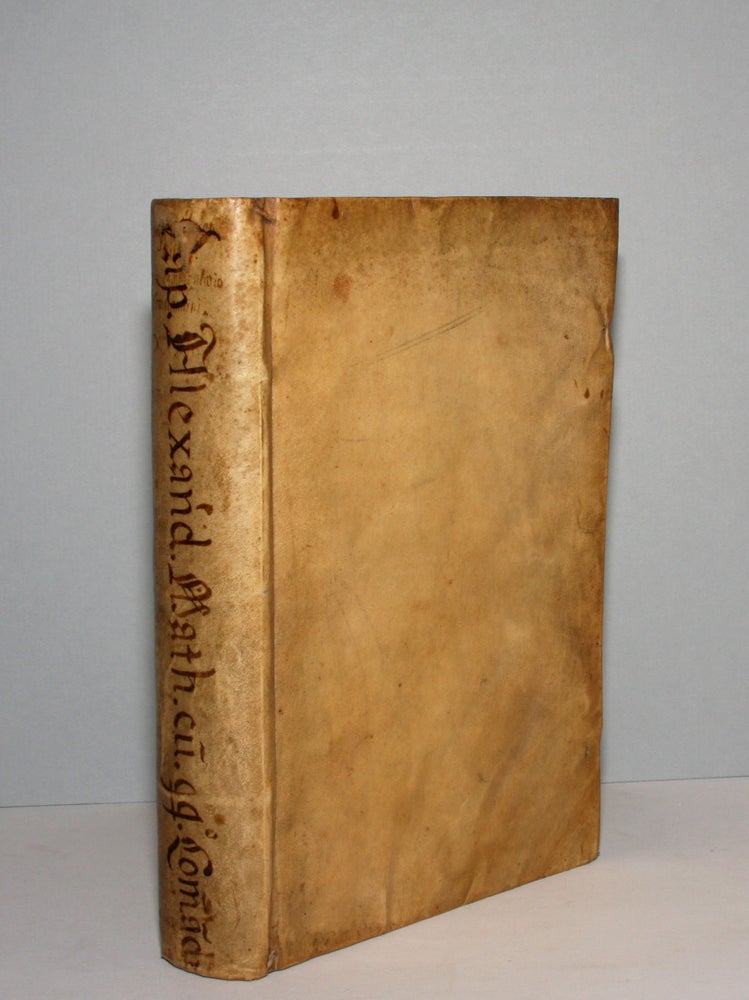Mathematicae Collectione.
Folio, (4) ff., the last blank, 334 (ie 332, with frequent misnumberings), including numerous diagrams in text. Bound in contemporary limp vellum, title stenciled in gothic letters on spine, ties gone, and housed in half-morocco and linen bookbox with gilt-stamped title on spine. Minor paper flaw to t-p touching two partial letters; some minor fingersoiling on a few leaves, and light waterstain in margin of final two leaves; otherwise a large and very fresh unsophisticated copy, brilliant.
Very attractive and genuine copy of the scarce first edition. This is the complete extant text of the Alexandrian geometer Pappus (4th century AD) in the Latin translation of Federico Commandino, a crucial source for the history of ancient geometry (not infrequently the only extant witness) and a work which remained mathematically important to such later geometers as Descartes and Newton. This posthumous publication completes Commandino’s life’s work of reviving Renaissance mathematics by making available the best mathematical thought of antiquity.
“Heath judiciously observes that the Collection, while covering practically the whole field of Greek geometry, is a handbook rather than an encyclopedia; and that it was intended to be read with the original works, where extant, rather than take their place. But where the history of a particular topic is given, Pappus reproduces the various solutions, probably because of the difficulty of studying them in many different sources. Even when a text is readily available, he often gives alternative proofs and makes improvements or extensions.” -- DSB, X.294;
The book of greatest interest to modern geometers is book VII, in a passage on Apollonius’ Conics. This concerns the attempt to conceive of the product of more than three straight lines as geometrical entities, known as “Pappus’ Problem”. Descartes devoted a major part of his own Géométrie to this, and solved it by the use of algebraic notation. “Pappus’ problem thus inspired the new method of analytical geometry that has proved such a powerful tool in subsequent centuries.” -- DSB, p. 296 (and for Newton, see the following paragraph.).
* Adams P-223; Rose, Italian Renaissance of Mathematics, p. 209-13 for the circumstances of publication; Ivor Bulmer-Thomas, DSB X.293-304.
Price: $25,000.00


